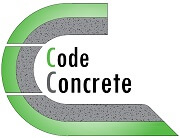Stamped Concrete: All You Need To Know

Last updated on March 23rd, 2022
What is stamped concrete?
Stamped concrete, or textured concrete, is a type of concrete having a special decorative finish. Interestingly, this concrete would end up looking very similar to other materials.
For instance, it can be made to look like wood, natural stone, bricks, tiles, or various other materials.
In fact, stamped concrete can be made with a wide variety of colors, shapes, textures, and patterns. Nowadays, you can make stamped concrete to look like almost any building material. In addition, it can look very realistic and even hard to distinguish to most people.
Stamped concrete, or textured concrete, can be dated back to the 1950s. It rapidly gained interest as soon as builders started presenting the idea in trade shows and exhibitions. In fact, its ability to aesthetically replace various materials, in addition to its numerous benefits, increased its popularity widely.
Stamped concrete process
The stamped concrete process involves several steps in addition to those of normal concreting. These mainly include coloring, stamping, and detailing.
Coloring stamped concrete
One of the major differences in the stamped concrete process is coloring. In fact, stamped concrete can have a wide variety of colors, almost any color you can imagine. In general, the color consists of a main color or base color and one or more secondary colors. Hence, they can be classified into two main types: primary color, and secondary colors.
You can find more about stamped concrete colors and coloring methods in the following article, “Stamped Concrete Colors: The Ultimate Guide to Coloring Methods“.
The primary color
The primary color can be achieved through two methods. The first method is adding a pigment to the mixture. Whereas, the second method involves broadcasting a color hardener.
On one hand, pigments are added during the mixing process of concrete. Thus, this method gives the primary color to the whole concrete volume.
On the other hand, color hardeners are broadcast or sprinkled to the surface of wet concrete. Then, after the hardener absorbs the surface moisture, it is floated and troweled. Hence, color hardeners give the primary color only to the surface, and not to the entire concrete. In fact, most of the color hardeners, or dry shakes, have a basic benefit over pigments in terms of their surface effect. Usually, color hardeners improve the strength and durability of the concrete surface.
The secondary color(s)
The secondary color is usually given with the mold release agent. We will explain more about mold release agents later on. Also, there are two methods for the application of the secondary color. The first method is to broadcast a colored mold release agent, in a powder form, to the surface of concrete prior to stamping. Whereas the second method is to apply a colored mold release agent, in a liquid form, to the surface of the stamping molds and/or to the surface of concrete.
Hence, this process gives the accent color for stamped concrete.
The process of stamping or imprinting
The mold release agent, which we mentioned previously, is an essential material in stamped concrete. In fact, we talked about secondary colors that are integrated with the mold release agents. However, mold release agents are also available with no color effect, and can be used on stamped concrete with no accent colors.
Mold release agents are compounds that can help stamps to be easily removed from the surface of concrete without sticking. Thereby, they help in avoiding surface defects too.
Next, after the application of the colored mold release agent, the stamping molds are pushed into the surface of concrete and then removed. The stamping molds can have a wide variety of patterns and can give a wide variety of shapes and textures. In addition, there are several types of stamping molds.
Find out which are the most popular stamped concrete patterns in the following article, “Stamped Concrete Patterns: The 8 Most Popular Patterns“.
Timing is a crucial factor in the stamped concrete process
However, timing is very important. For instance, if the stamping starts early, the concrete won’t be set enough to bear the weight of the molds and the workers. Whereas, if the stamping starts late, the workers will have to add much more pressure and can even end up having hardly any imprints.
Detailing
Afterwards, an important step after stamping the concrete is its detailing. In general, almost every concrete stamping work needs detailing. Detailing is the process of fixing small surface defects, tailoring the joints, and improving any flaws in the pattern and texture.
Installing joints, cleaning, curing, and sealing stamped concrete
And of course, like any other similar concrete work, stamped concrete also needs joints and requires curing and sealing. However, it is important to clean the surface prior to curing and sealing.
Joints

Joints are specific grooves or cuts which can help in controlling the formation of random cracks in concrete. In general, as concrete hardens and cures, it passes through volumetric changes, or simply it slightly shrinks. Thereby, if the concrete element is restrained, the stresses induced by the restrained volumetric changes will often cause cracks. Examples of restrained elements include slabs on grade such as patios, walkways, driveways, and pool decks. Hence, joints play a major role in “forcing” the cracks to occur in the cuts or grooves. In general, there are two common techniques to make joints.
Grooving joints in wet concrete
The first is to create groves while the concrete is still wet. In this process, the finisher makes a relatively deep groove while the concrete is still wet.
Saw-cutting joints
The second method is to cut grooves into the hardened concrete using a saw. These saw cuts are usually made as soon as the concrete hardens enough to allow the cut. For example, finishers can make early-entry saw cuts in the same day of pouring, just after a few hours. Sometimes, the joint cutting is delayed a day for various purposes.
By comparing the two techniques, saw cutting is certainly less noticeable.
So which joint technique to follow for stamped concrete?
On one hand, the process grooves in wet concrete may cause work complications with stamped concrete of an interlocking pattern. In fact, various factors play a major role in choosing the technique for creating joints.
On the other hand, saw cutting is less noticeable, thus giving a more realistic overall look. However, it is important to consider that an early-entry saw cutting process can leave prints on the newly stamped concrete.
So which method to apply?
In general, for non-interlocking patterns that are only for texture, and for straight line patterns such as brick or wood patterns, both techniques are applicable. However, wet-scoring or making grooves in wet concrete is the best solution. Whereas, for complicated and interlocking patters, it is best to saw-cut the joints.
It is important to mention that some stamped concrete contractors and finishers provide a solution of making joints that follow interlocking or complicated patters. For example, making a joint that follows a fieldstone pattern. This is a bad practice in most cases! Why? Because such joints are suitable for concrete movements that are only perpendicular to the joint. Any parallel movement will cause the joint to interlock and thereby to transfer stresses to the adjacent areas causing cracks. Such joints can only be used if well-designed.
Cleaning any excess release agent
In addition, it is important to clean the stamped concrete surface from any excess release agent. In fact, different release agent suppliers recommend different washing and cleaning methods or products. Thereby, it is best to check the product specifications and recommendations. In general, the cleaning process starts after 1-3 days (depending on the weather conditions and product recommendations) when using colored release agents.
This process is important before continuing to the next steps. Also, it is often recommended to clean any excess colored release agent before you start walking on stamped concrete. In addition, if you are using a curing compound, it is usually a must to clean the stamped concrete first.
The process of curing stamped concrete
Like any similar concrete work, the stamped concrete process also includes curing. In fact, curing is one of the most important procedures in almost any concrete work. During this process, concrete gains its strength and durability gradually. However, improper curing can cause various problems in concrete including cracks, lower strength, and less durability.
In general, there are several curing methods for concrete, however we will not explain every method. This is actually a huge topic. Instead, we will briefly explain the two common curing methods in the stamped concrete process.
Applying curing compounds
Often, contractors apply curing compounds to the concrete as a curing method. These compounds are evenly sprayed or roller-applied to the surface of concrete, to form a film that blocks the evaporation of water. In fact, curing compounds should conform to ASTM C309 or ASTM C1315.
In general, curing compounds can be either transparent or white pigmented. The latter is more beneficial in hot weather conditions and direct sunlight exposure.
Generally, it is essential to wait for concrete to cure for a minimum of 28 days before moving to the next step, which is the application of a sealer. However, it is also important to remove the curing compound before applying the sealer. And with inadequate products, this can be a somehow complicated process. Thereby, when choosing the method of curing with a compound, always check its removal process. Some products are easy to remove with another products, and some require a more complex process.
In addition, curing compounds that also act as sealers are available in one product. Such compounds provide curing and sealing at the same time. Hence, cure and seal products are commonly used on stamped concrete since they simplify the curing and sealing processes.
Water curing
Water curing is another common curing method for concrete. It aims to keep the surface of concrete wet at almost all times during the early age. Generally, low pressure water hoses or sprayers are applicable. In fact, the main benefit of water curing is that it is less expensive and does not require a compound removal as in the case of separate curing compounds. However, this method is time consuming and requires very frequent work. For instance, you should keep the concrete wet at almost all times over a period of “generally” about 14 days. Then followed by less frequent watering preferably till 28 days.
However, it is important to note that the traditional water curing process can cause discoloration and increase the potential of efflorescence.
The process of sealing stamped concrete
The next step after the stamped concrete has cured, is to seal it. This is specifically essential when the concrete is exposed to weathering conditions, deicers, oil, staining, etc… .
It is generally important to apply the sealer after the concrete has “fully” cured, in 28 days. In addition, most sealers require the concrete to be dry, with limited moisture content, prior to their application.
However, there are many different types of sealers for concrete, and each has its own benefits and applications. Hence, it is important to know how to choose the best sealers for concrete floors.
You can find out more about which type of sealers is best for different applications in the following article, “Which Concrete Sealers are Best for Patios, Driveways, Pool decks, and Garages“.
Also, you can learn more about the best acrylic sealers for stamped concrete in the following article, “The Best Acrylic Sealers for Stamped Concrete: All You Need To Know“.
Advantages and disadvantages of stamped concrete
Advantages
Stamped concrete has various advantages when compared to its alternatives or to what it resembles. In fact, its numerous benefits have made it widely popular all over the world. The advantages of stamped concrete include:
1. Ideas and designs
One of the most important benefits of stamped concrete is the huge number of available choices with colors, textures, and patterns. You can make stamped concrete look like bricks, natural stone, wood, etc….
2. Cost
Another essential advantage of stamped concrete is that it usually costs less than what it resembles. For example, a stamped concrete floor that looks like natural stones costs significantly less than a floor of real natural stones.
3. Durability and resistance
With proper maintenance and sealing, stamped concrete can be very durable and resistant. In general, it can be long-lasting and can resist various chemicals, oils, weathering conditions, and abrasion.
4. Cleaning
Also, it is easy to clean especially when properly sealed.
Disadvantages
However, stamped concrete, like any other material, also has its disadvantages. The main disadvantages of stamped concrete include:
1. Installation
The stamped concrete process requires professionals and special tools, and its not a project you can you easily do on your own. In addition, and most importantly, its installation has a tight time frame.
2. Periodic costs
Stamped concrete usually requires periodic re-sealing, which is an additional cost to bear in mind.
3. Repairs
Although it can be durable and resistant, it may require repairs when not properly maintained and sealed. However, repairs are not usually an easy task especially with color matching for instance.
4. Cracking
Like any other concrete, it is susceptible to cracking. However, with adequate mix design, curing practices, joints, and sealing, you can significantly control cracks.
Cost of stamped concrete
The average cost of stamped concrete is between $12 and $16 per square foot. However, the cost can vary significantly depending on the concrete volume, region, the stamping pattern, texture, colors, type of sealer, and the shape of the element.
For example, a 4″ thick patio with a single colored brick pattern can cost between $8 and $12 per square foot. Whereas, a 6″ thick driveway with multiple colors, multiple textures, complex pattern, chemical stain accent, custom border, and high quality penetrating sealer can cost up to $30 per square foot.
Maintenance
The most important maintenance process of stamped concrete is frequent cleaning, and periodic sealing. That is all what it needs to stay in a perfect condition. In fact, frequent cleaning helps to wash off any chemicals, salts, or deicers from the surface, which can eventually soften the sealer and reach the concrete. Also, periodic sealing is essential to maintain its durability, resistance, and aesthetics.
With proper maintenance, you can avoid major problems such as color fading, stains, cracks, efflorescence, and others.
Frequently asked questions
Find out about the frequently asked questions about stamped concrete, its appearance, cost, durability, coloring, sealing, cleaning, and repairing, in the following article, “Top 30 FAQ: Stamped Concrete Designs, Cost, Maintenance, and More!“.




